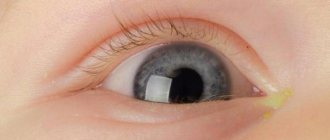In the modern world, the vision of every person is under increased strain: computer monitors, TV screens and all kinds of gadgets are constantly in front of our eyes, at work and at home. Therefore, many people who seek to compensate for damage to vision, at least where possible, are concerned about which light is better. In addition, the color of lighting affects the perception of the interior of the room; it can emphasize it favorably or, on the contrary, unpleasantly distort the colors. It follows from this that even such a trifle as choosing a light bulb must be treated with attention.
Expert opinion
Anton Tsugunov
Construction expert. Entrepreneur. 17 years of experience. More than 100 completed objects.
Hello, friends!
Let me clarify right away: the color temperature of lighting has nothing to do with the air temperature in degrees Celsius. It does not affect the heating of the lamp or luminaire. Temperature, which is measured in Kelvin, refers only to the characteristics of light, or rather, to the visible part of the radiation.
The meanings of “ warm” and “cold” light are so called only because of how we see them, and have a purely psycho-emotional meaning.
It has been experimentally proven that in a room with lamps of about 6,000 Kelvin, people FEEL like the temperature in the room is a couple of degrees lower. The thermometers showed the same temperature in degrees Celsius.
The influence of lighting color on humans and vision?
There is no need to worry about the relationship between the color of lighting fixtures and eye health: it does not affect vision.
However, the shade of lighting still has a certain effect on a person: to some extent, our psycho-emotional state and mood depend on it. Warm light promotes relaxation, cold light invigorates and keeps you in good shape, so each of them is good in its place and at its time.
Expert opinion
Kurenkov Vyacheslav Vladimirovich
Ophthalmologist (ophthalmologist), Ophthalmic surgeon, 26 years of experience, Doctor of Medical Sciences, Professor
All household appliances and lamps undergo hygienic tests, including tests for eye damage. All of them are approved for use and do not have a negative effect on the human visual organs. Therefore, they can all be used. But it is worth noting that you cannot look “directly” at any source of illumination, like the sun.
For home use, those lamps that are used for household appliances, and not for street lighting, are suitable. Bright light can damage your eyes. (Quote from aif.ru)
Let's figure out which artificial light is better and healthier for the eyes - warm or cool white?
USEFUL INFORMATION: Warm or cold light in the apartment?
No matter how hard companies developing artificial lighting devices try to create a light bulb that fully corresponds in all respects to natural sunlight, to date these attempts have been unsuccessful.
The relationship between light and vision
There is no need to worry about deterioration in eye health due to exposure to light, since it does not have much of an effect. But the psycho-emotional state of a person and his mood will still depend on the shade of lighting in the room.
Warm light helps you relax faster and allows you to fully rest, while cold light, on the contrary, invigorates and sets you up for the work process. Which light to choose - cold or warm? Each of them will be appropriate in a certain situation and under specific circumstances.
Source color temperature
To find out what the light will be like from an energy-saving or LED lamp, you need to pay attention to the color temperature value indicated on the packaging. The unit of measurement is Kelvin (K).
The lower this value, the more yellow the glow will be. Light from a light bulb with a high color temperature has a bluish tint. Most often there are three main lighting colors:
- Warm white – 2700–3500 K.
- Neutral or natural white – 3500–5000 K.
- Cool white – from 5000 K and above.
USEFUL INFORMATION: LED lamps: warm light or cold, what’s the difference?
Which light is better - warm or cool?
There is no direct answer to this question. It all depends on the room, purpose and use case for the lighting.
For example, the situation with the illumination of a painting: the lighting changes the mood of the canvas, the shades play completely differently at different light temperatures.
The same situation with a bouquet of flowers.
And here's what the utility room looks like with different lighting.
Here is a good illustration of how the perception of colors changes depending on the temperature of the light. The palette doesn't change!
Conclusion: qualitatively color temperature does not change lighting. But before choosing lamps, you need to understand what effect to expect, and where what kind of light is appropriate.
How to break the rules?
Using light of different temperatures is allowed if done correctly. To do this you need to follow the following rules:
- Different colors can be combined when it comes to main and additional lighting. Accent lighting in this case will be small spotlights of a different tone. They are mounted in order to highlight individual objects or textures in the interior through narrow directed beams. The main color should have a different temperature. This solution is often used by professional designers.
- Warm and cold light from LED lamps is usually used in studio apartments, open offices and other rooms in which network zoning needs to be created. To create this effect, warm and neutral light lamps are installed in different corners of the room, which helps emphasize functionality. In this case, the light sources are located in such a way that rays of different temperatures intersect minimally. The technique is difficult to implement without an experienced designer.
- You can independently combine different lighting in one room if you combine warm and cold light bulbs.
Another method to combine different colors in one room is to develop lighting schemes. Sources with different colors should not be turned on at the same time, otherwise it will break the concept. If you can’t choose the lighting in the room yourself, then it would be best to contact a professional designer. It is he who will select the color of the lighting fixtures depending on the interior and answer the question of whether cold or warm light is better.
How to choose and buy lamps and lighting online without leaving home?
Anton Tsugunov , I have been doing repairs and finishing since 2003.
I prefer to buy lighting from an online store - it's very simple, convenient and safe. You can buy everything you need without leaving home.
This is better than going to the store and standing in lines: first at the checkout, and then at checkout. Lamps and lighting fixtures are delivered to me directly to the site at the agreed time. It’s more convenient and safer!
In the online store you can find the exact specifications and real customer reviews. There is a photo of how the lighting looks in the interior.
Moreover, when I pay for purchases with my card , I receive cashback of up to 30% of the purchase amount !
It turns out to be a double benefit! I don’t risk my health , I don’t waste time on the road, I receive paid goods at the time I specified and also save up to 30%.
Most often I purchase the following lamps (Rating):
- LED;
- Luminescent (energy saving);
- Halogen;
- Incandescent lamps;
- Smart lamps;
- Special (for plants, birds and animals, against insects, etc.);
- Fluorescent lamps (for office and technical premises);
- Retro (Edison lamps).
What light is best for reading?
For comfortable reading, the lighting intensity should be around 500 lumens (500 lm).
Important characteristics:
- The lamp must be protected from view by a shade and have diffused glass (preferably milky white) so as not to blind the reader.
- The light source should be placed on the side of the person: for writing - on the left (for left-handers, vice versa), for reading - on the right.
- The recommended distance of the lighting fixture from the book: to the side - from 30 to 40 cm, and above the table surface - from 25 to 30 cm.
- The light should not be reflected directly into the face! Even if the source is opposite the reader, you should adjust the table lamp so that the light is reflected towards the chest area or upward.
And now about the color temperature of light for reading . It all depends on the lighting use case: what you are reading and when.
- If a person, being in a poorly lit room, reads something for work or study, and it is important for him to remain alert and concentrated, then natural white light of medium intensity is suitable.
- If the room is well lit, then cool white light will increase clarity of thinking and even resistance to seasonal depression. It will not be perceived as cold, but rather as neutral white. The brightness should be comfortable so as not to strain your eyesight.
- But if you decide to read a light book before going to bed, then normal and “cool” light is strictly forbidden to you. These shades block the production of melatonin (sleep hormone). Warm light is ideal for evening reading. It should be muted, but of sufficient intensity so that the eyes do not strain. This light is soothing and helps you fall asleep easily.
What if, for example, the lamp on the table is used both during the day and in the evening, and even before bed? Don't buy three lamps for different occasions!
USEFUL INFORMATION: Design options for a children's room
For such a case, there are lamps with different color temperature modes and even with different glow intensities. The photo shows an example of how such a solution works.
Helpful tip: don't use a table lamp as your only light source! Always turn on the main light, at least at half the power possible. This will significantly reduce eye strain and make reading more comfortable and enjoyable.
Here is a link to LED table lamps >>>
And here is a link to the lamps for the desktop >>>
Expert opinion
Anton Tsugunov
Construction expert. Entrepreneur. 17 years of experience. More than 100 completed objects.
Try to think through scenarios for using light in advance. You have already seen that the result and perception vary greatly depending on when, what and where you cover.
Below we have given basic recommendations for the use of lamps of different temperatures, but there are a lot of nuances . It is advisable to work this issue out in detail with the designer.
We combine
Modern interior projects cannot do without several lighting scenarios. It is possible and necessary to use different light temperatures for them. For example: general lighting in the kitchen and local lighting above the dining area can be warm, and the lighting on work surfaces can be white. Neutral light will say more about the quality of your products than a flattering, warm light.
For general lighting in the living room, neutral light is also often chosen, but let sconces, floor lamps and table lamps shine warmly, intimately.
Even one lighting device can combine different lamps: with “morning” and “evening” light, which can be activated using different switch keys.
The bathroom needs honest white light for beauty treatments, but if you completely flood the “ceramic” room with cool light, it can resemble an operating room. To make the environment more relaxing, you can use several lighting scenarios with different temperatures in the bathroom: warm for relaxing in a bubble bath, cold for a vigorous shave or applying makeup in the morning. You can even use two temperatures to illuminate the mirror: for morning and evening makeup.
Which light is best for a room: warm, cold or a combination of both will depend directly on its functional purpose and your habits.
It is advisable not to use warm and white light sources at the same time; this will most likely cause visual dissonance, because on the one hand there will be a signal “it’s time to cheer up”, and on the other - “it’s time to relax”. With such light variations, the body gets tired faster.
Scandinavian style lighting in the interior
Purity, simplicity and freedom - these are the principles of the recently fashionable Scandinavian design.
It is characterized by light colors, space free from small objects, and the use of natural and eco-friendly materials. Scandinavian style lighting in the interior plays an important role in bringing out the aesthetics. The temperature of light is as important a part of interior design as the choice of colors, furniture and materials. The Lanskoy TC showrooms will help you choose the right lighting fixtures.
#How to choose #Which is better #Color #Light
Warm light
Warm white lighting with a familiar yellowish tint is comfortable and pleasant to the human eye, its glow is the same as that of yellow sunlight in the early morning or towards sunset. It can be provided by both conventional incandescent and halogen lamps. You can also find fluorescent and LED devices with warm spectrum radiation on sale. Where is the best place to use this light?
USEFUL INFORMATION: Organization of apartment interior lighting: spot light and backlighting
- In the living room. It is recommended to organize warm lighting in rooms where you want to create a relaxed and cozy atmosphere. For example, in a room where the family gathers in the evenings to have dinner and chat.
It is best to install a diffuser chandelier in the living room.
Here is a link to LED chandeliers >>>
Here is a link to successful hanging chandeliers >>>
- In the kitchen. Warm lighting is perfect for the area above the dining table: dishes will look more appetizing and beautiful.
- In the bathroom. Soft, warm light in the bathing area will help you relax.
- In the bedroom. It is in this room that it is especially important to create a feeling of calm and comfort so that the eyes can rest. Bedside decorative lamps are perfect for this
Warm spectrum lamps are used by designers to increase the color saturation of interior items in soft tones. Cool shades, on the contrary, will become less noticeable. Blue and green colors will be distorted: this is due to the fact that the light from such a lamp does not contain rays of the corresponding spectrum.
Under such lighting, cool tones change as follows:
- blue may appear greenish;
- blue will become faded;
- dark blue will turn to black;
- purple can be confused with red.
USEFUL INFORMATION: Connecting a switch equipped with a dimmer
That is why you need to think through all the details in advance, before purchasing a lamp, so that the illuminated room does not acquire an undesirable or even unpleasant appearance.
Natural white light
Halogen, LED and some fluorescent lamps provide illumination that is as close as possible to natural white light, so colors are virtually undistorted . It is advisable to install them:
- in children's rooms, but not cheap fluorescent lamps, they flicker and can cause headaches ;
- in the hall;
- in the kitchen work area;
- in a place intended for reading, such as near a chair or in the bedroom above the bed;
- next to mirrors, as they accurately convey skin tone.
USEFUL INFORMATION: Decorating a children's room for a girl and a boy: interior design
It must be remembered that it is important to correctly position the light source relative to mirrors and reflective surfaces so as not to blind the person looking at them.
Choosing safe lamps for the home
Light is one of the conditions of life on Earth, sunlight is the most natural for human life and previously people coordinated their life rhythms with it, but in modern civilization everything is somewhat different thanks to the invention of T. Edison, who at the end of the 19th century introduced the incandescent lamp to the world.
They have served us for quite a long time, but progress does not stand still and they are being replaced by more and more new lighting technologies, and not the safest ones. Let's understand the world of light!)
Types of lamps
An incandescent lamp (Il) is the most common light bulb that emits light when electric current is passed through a spiral. It is made of environmentally friendly materials (glass and metal).
These also include halogen lamps (HLN), the next generation of conventional lamps (their flasks contain iodine or bromine vapor, their luminous flux is more powerful and the light is more natural than that of conventional lamps.
Incandescent lamps, according to the law adopted in Russia, are gradually going out of use; stores are selling off stocks produced before 2014.
Energy-saving lamps are more durable and can last you from 1 to 5 years; they do not spend energy on heat, but only on light emission.
A fluorescent lamp (CFL) produces light by passing an electric current through mercury vapor inside a bulb, this creates ultraviolet radiation that is converted by a special coating (phosphor) into visible light. The environmental friendliness of this lamp is very low, due to the presence of mercury and other substances.
LED lamps (LEDs) – produce light by passing electric current through semiconductors (LEDs) and do not contain substances harmful to the environment and health.
When choosing lamps that are safe for health, you should focus on the following parameters:
Color temperature and emission spectrum.
A regular incandescent lamp emits a yellow color that is similar to sunlight at sunset, other types of lamps produce more cool white light, and CFLs contain a high level of blue light in the spectrum, which, when turned on in the evening hours, interferes with the production of melatonin, a hormone responsible for the antitumor work of cells. and normalization of sleep and wakefulness rhythms. It is not advisable to use them in the evening and in bedrooms. Since our eyes are focused on perceiving red-yellow colors, blue increases eye strain and can reduce visual acuity.
SDL also has a high level of blue in the color spectrum, however, improved warm light SDL lamps with a color temperature in the range of 2700-3000 K are currently on sale. Remember
that you should choose lamps with the most natural color temperature of 2,700 - 3,500K (the lower the temperature, the warmer the color).
Halogen lamps have a temperature of 3000 to 3500K and can be installed in residential areas, avoiding installation in children's rooms and bedrooms.
Please also take into account that over time, after 1.5 years of service in CFLs and SDLs, the amount of blue color increases due to the thinning of the phosphor.
Ripple level.
Lamps under the influence of alternating current emit light pulsed, that is, a flickering of light occurs that is invisible to our eyes, which negatively affects vision, tires the nervous system, and leads to headaches and eye pain. The level of ripple is highest in SDLs (flicker can reach up to 100%), CFLs (up to 50%), and least in incandescent lamps (25%). Therefore, it is best to use LN in a table lamp.
Radiation level.
All lamps emit infrared (IR), electromagnetic (EMR) and ultraviolet (UV) rays.
Conventional lasers emit mainly infrared radiation, which is more natural and does not have a significant impact on health when used correctly. CFL and halogen incandescent lamps emit electromagnetic rays, which are difficult to call healthy.
However, their main insidiousness is that they emit UV rays; in high-quality lamps this radiation does not reach more than 1%, but in Chinese analogues it can be significant. In addition, with increasing service life and as the phosphor becomes thinner, the amount of UV radiation may increase. And it can negatively affect the skin, the occurrence of eye diseases, and cancer. Therefore, it is unacceptable to be near such lamps at a distance closer than 40-50 cm. SDLs are the safest in terms of the parameters of emission of all three types of radiation.
Toxicity level.
Plastic and varnish (CFL, SDL) can emit toxic substances and have an unpleasant odor.
And the mercury content in the bulbs of low-quality CFLs may be exceeded and there is a possibility of its release. Typically, LNs are safer in terms of material composition. In addition, if you break a CFL, then measures to clean the room from mercury vapor must be serious. Especially if the light bulb is turned on and heated, because then you will have to throw out half the things in the room or order an expensive detoxification of carpets and furniture, since when heated, it settles in the smallest detail on all things.
Remember that CFLs should not be thrown away with household waste; if they break, they pollute the environment.
As we see, one of the ways to protect yourself when choosing lamps is to carefully study their characteristics, and you should not skimp on choosing lamps, since large manufacturers have better control over the production process, and cheap Chinese lamps can be assembled underground, without taking into account radiation standards and other parameters.
In your home, you can organize hybrid lighting using CFLs and SDLs where you are not staying for a long time; in bedrooms, in the workplace it is better to use LN or high-quality SDLs.
Dear readers, tell us about your experience using different types of lamps!
Cold light
Light with a cool color spectrum resembles the white winter sun. It is often used in office spaces, as well as anywhere where it is necessary to create a working mood. Neutral and cool shades are suitable for those places where there is supposed to be both natural and artificial lighting, as these tones will help improve concentration.
Cold light flux is perceived by the human eye as brighter and more intense.
In apartments, lamps with such radiation are most often used:
- In the kitchen where accent lighting is required for food preparation.
- In the office, because such radiation balances and increases performance.
- In the bathroom, in the wash area, cool bluish lighting will help you invigorate and wake up completely.
USEFUL INFORMATION: Design options for a stylish bathroom: high-tech, modern, Scandinavian, marine
- It is recommended to use this spectrum in living rooms when they have a modern design and a lot of free space.
USEFUL INFORMATION: Modular paintings (12 photos) in the living room interior: modern style
Colors in this lighting are also distorted, but the changes affect only warmish shades. Red, orange and yellow colors will appear purple, brown and greenish respectively. But blue and green tones, on the contrary, will look rich and rich.
What color temperature lamps do you prefer?
Note! The color of lighting is affected not only by the glow of the light bulb, but also by the color of its bulb, as well as the lampshade or lampshade.
The effect of warm color on a space
The colors that appear brightest in warm light are cream, brown, yellow and red. Cold tones begin to darken greatly and change tone. Thus, blue can become greenish, and blue can become unsightly.
Designers recommend using lamps with a color temperature from 2700 to 3000K in rooms where the walls and other main areas are made in warm colors. It is these colors that look less bright and are well suited for small rooms. A living room that has a lot of free space may look poorly lit or visually reduced in size.
How to choose lamps?
To choose the right light bulb, it makes sense to pay attention not only to the color, but also to its other parameters. All lighting sources used today are characterized by several characteristics:
- Operating principle. There are LED, fluorescent, halogen, and well-known incandescent lamps.
- Flask configuration. The most common types are pear-shaped, spherical, tubular, mushroom-shaped and so-called spots.
- Efficiency LED bulbs have the highest performance today.
- Price. The cheapest light sources are incandescent lamps, the most expensive are LED. At the same time, the latter are environmentally friendly and consume much less electricity.
USEFUL INFORMATION: LED lamps: warm light or cold, what’s the difference?
Color rendering index (CRI or Ra)
To understand how the room will look when artificial lighting is turned on, at the time of purchase it is better to further clarify the color rendering index of the light bulb. The letters CRI or Ra are used to designate it; ideally, this indicator should be 90 or higher , this will allow you to see the natural colors of objects in a room illuminated by a lamp. If Ra is less than 80, the shades will be distorted.
USEFUL INFORMATION: Selection of colors in the interior of the apartment











